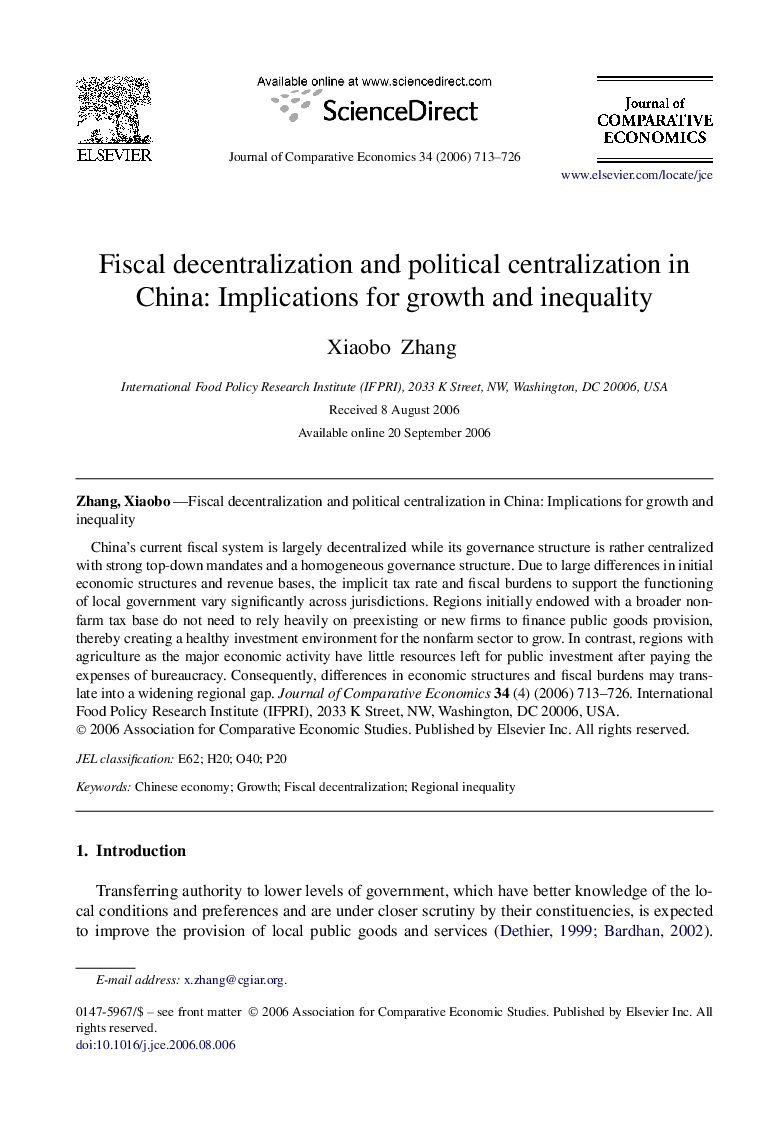| Article ID | Journal | Published Year | Pages | File Type |
|---|---|---|---|---|
| 5092649 | Journal of Comparative Economics | 2006 | 14 Pages |
Abstract
China's current fiscal system is largely decentralized while its governance structure is rather centralized with strong top-down mandates and a homogeneous governance structure. Due to large differences in initial economic structures and revenue bases, the implicit tax rate and fiscal burdens to support the functioning of local government vary significantly across jurisdictions. Regions initially endowed with a broader nonfarm tax base do not need to rely heavily on preexisting or new firms to finance public goods provision, thereby creating a healthy investment environment for the nonfarm sector to grow. In contrast, regions with agriculture as the major economic activity have little resources left for public investment after paying the expenses of bureaucracy. Consequently, differences in economic structures and fiscal burdens may translate into a widening regional gap. Journal of Comparative Economics 34 (4) (2006) 713-726.
Related Topics
Social Sciences and Humanities
Economics, Econometrics and Finance
Economics and Econometrics
Authors
Xiaobo Zhang,
